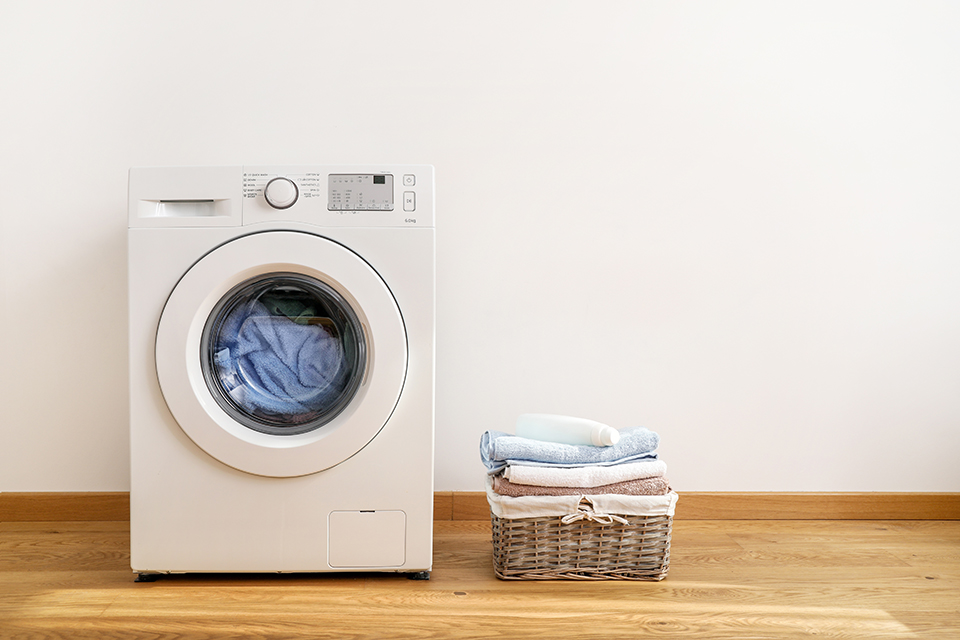
Four of the most cost-effective home improvements to save energy and money all year long.
Find out about a few of the most cost-effective ways to make your house more energy efficient and comfortable all year round.
Since the beginning of the pandemic, many Ontarians have been spending more time at home so it’s no wonder many of us are looking to invest time and money in making our homes a more comfortable place to live.
But improving your space doesn’t have to break the bank. There are many cost-effective ways to make your house more energy-efficient and comfortable all year long. Here are four ideas to get you started, from the least to the most expensive.
Smart power bars
Many appliances and electronics plugged in all around your home – like your coffee maker, TV and printer – can draw power even when they're not in use. Blame “phantom power,” or standby power, for that. To avoid falling victim to unnecessary power consumption, use smart power bars. There are various types on the market, but look for smart power strips that come with timers and can automatically cut off power to electronics that are in standby mode or simply left on needlessly.
Some smart power strips also have features to monitor energy consumption and provide reports that can help you optimize your electricity usage and save money.
Alternatively, you may want to engage an electrician to replace your current wall outlets with smart receptacles to get the same benefits but with a cleaner, built-in look. These smart outlets can be controlled with a smartphone and are compatible with many home assistants, such as Amazon’s Alexa or Google Home.
Energy audits are worth the investment
You can't save on energy unless you know how you're using it. Getting an energy audit is the best way to understand what upgrades you should be making and it helps to identify if your home is running efficiently and effectively. With Save on Energy’s Energy Affordability Program, income-eligible households can speak to an energy expert, and in some cases, get a free in-home energy audit and receive free energy-efficiency upgrades.
Energy-efficient appliances
A great way to save money in the long term is to upgrade older appliances such as fridges, washers and dryers to newer, energy-efficient models. Look for ENERGY STAR®-certified appliances. For example, a dryer with an ENERGY STAR label uses 20 per cent less energy than standard models. It often will also have built-in sensors to detect when your clothes are dry, saving you both energy and valuable time.
Appliances that are ENERGY STAR®-certified may also help keep your monthly electricity bills down. Washing machines with the ENERGY STAR label, for example, use 25 per cent less energy and 33 per cent less water than standard products. Similarly, ENERGY STAR®-certified refrigerators are nine per cent more energy efficient than standard products and use only half the energy of older models. Ensuring the coils of your refrigerator are clean can also help reduce energy use and keep your appliance running in an optimal condition.
Roof insulation
Roof insulation is on the higher end of the cost scale when it comes to renovations, but it’s still incredibly important for saving energy and improving your home comfort. Since hot air rises, a well-insulated attic ensures you’re keeping the heat in your home where its meant to be and not heating the outdoors. A properly insulated attic can save you an estimated 10 to 50 per cent on your heating bills and keep those energy costs from going through the roof, literally. The benefits don’t stop there. During warmer months, proper insulation can also ensure that the cool air stays inside, keeping you comfortable all summer long.
Blown-in or loose-fill insulation is best suited for attics or other hard-to-reach areas like sloped ceilings or roofs. It is also used for filling cavities and topping up existing insulation. Made from fibreglass or cellulose, this insulation can be poured or blown into cavities. When using this type of insulation, avoid overfilling the space as this can restrict overall attic ventilation. Keep in mind, though, that blown-in and blanket insulation is not a substitute for air sealing, which systematically closes gaps in leakage points throughout your home.
Spray foam insulation, on the other hand, is an expanding foam that is sprayed on the surface or into the cavity where it is being installed. This type of insulation is best suited for cavities that need tight air sealing. For more information on what insulation to purchase for your home, check out our Buying Guide.



